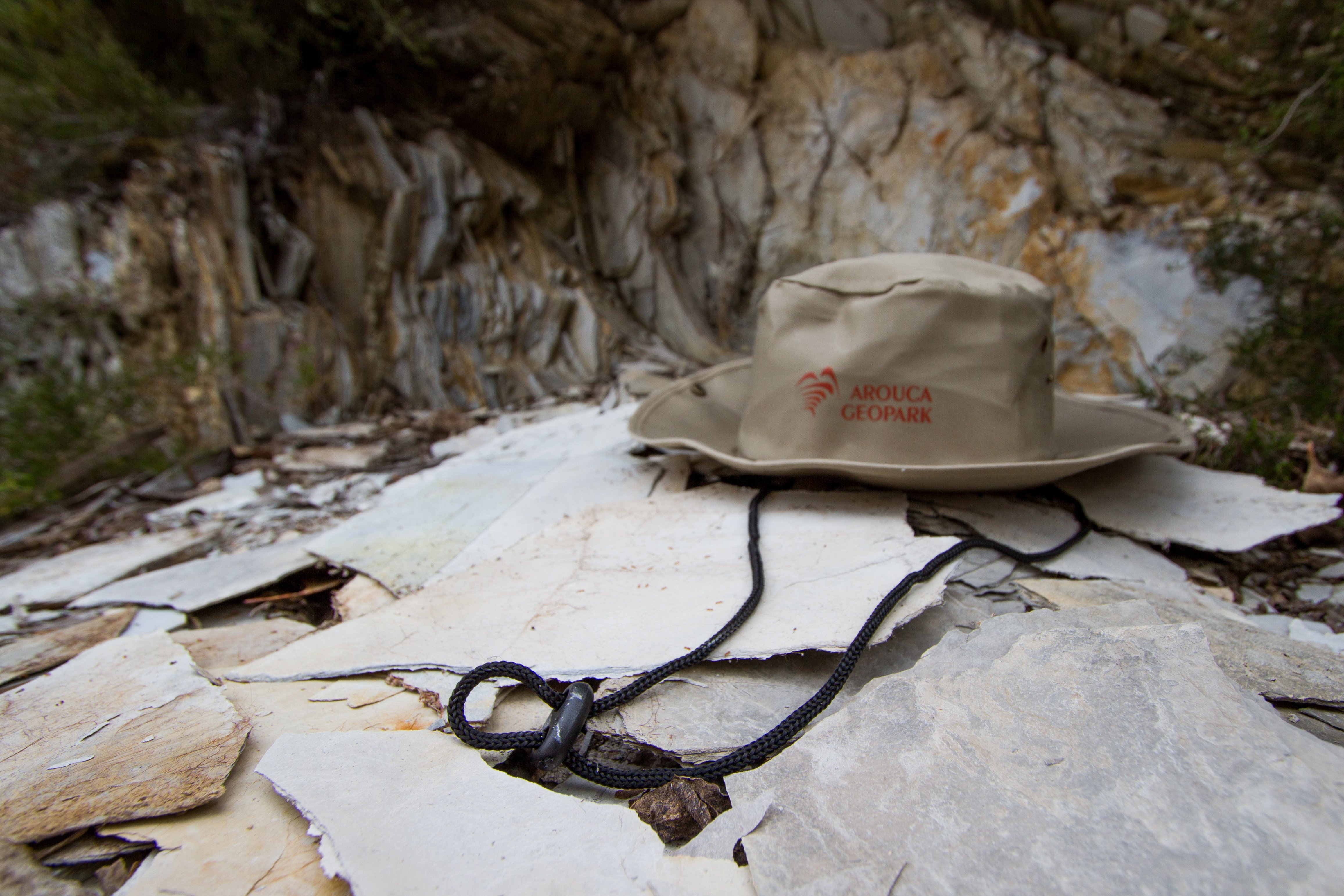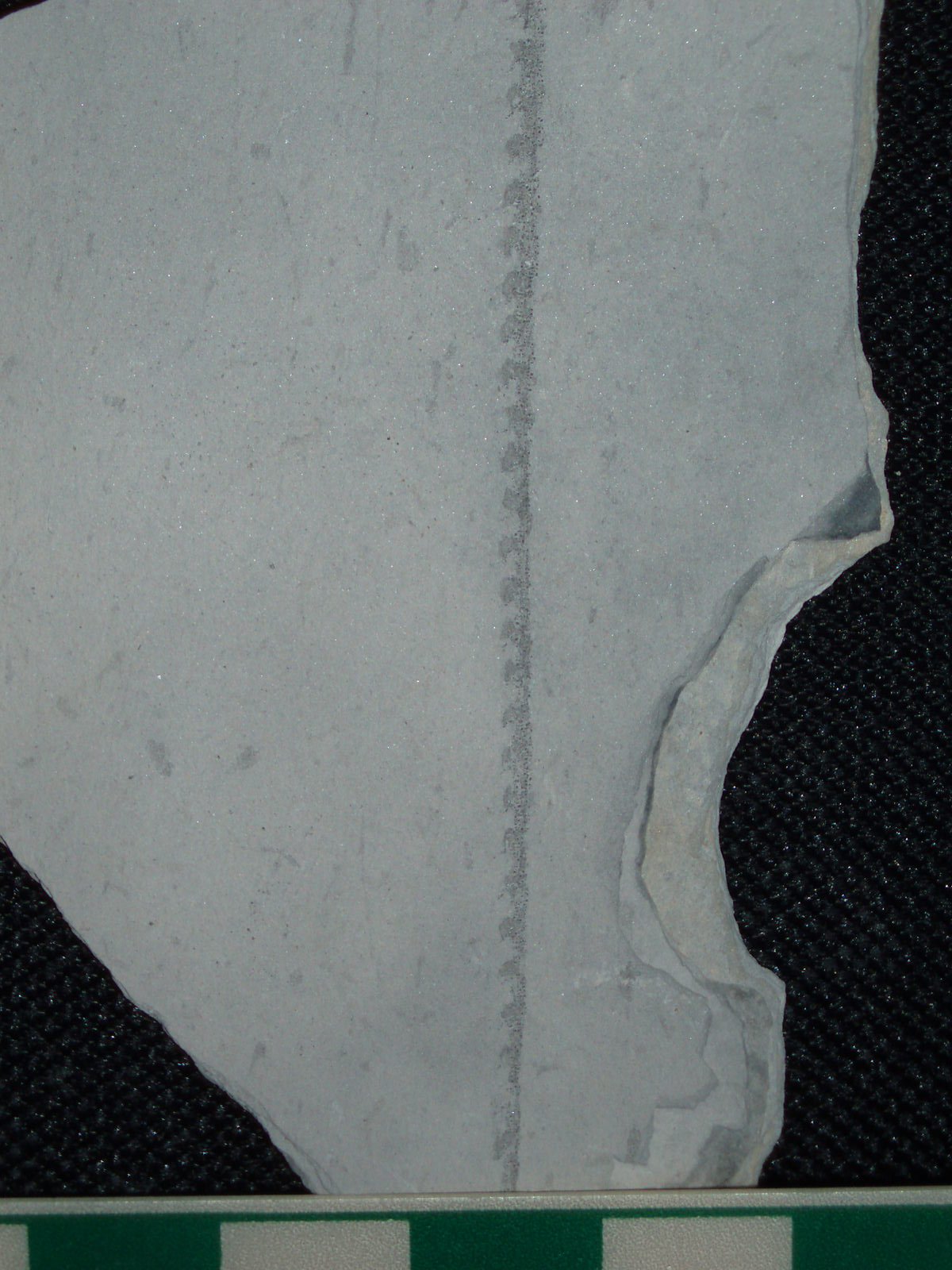
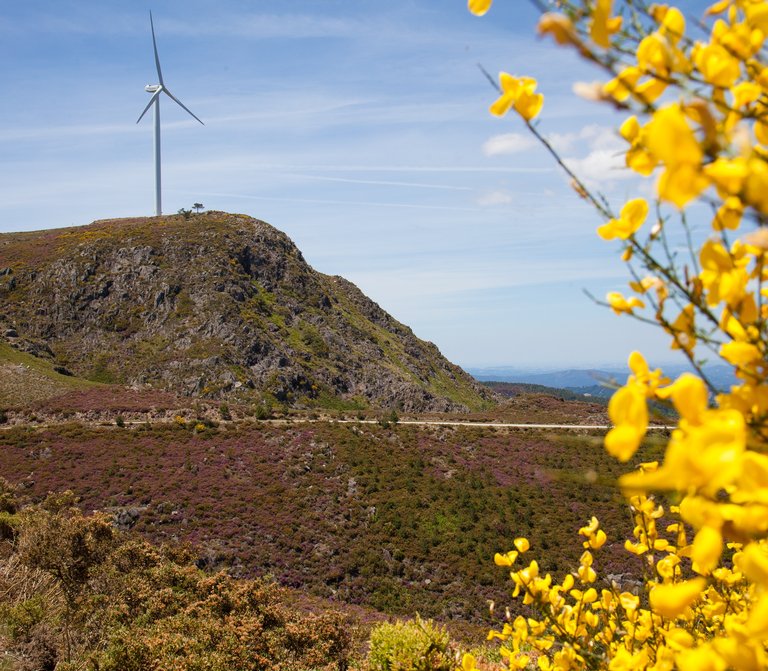




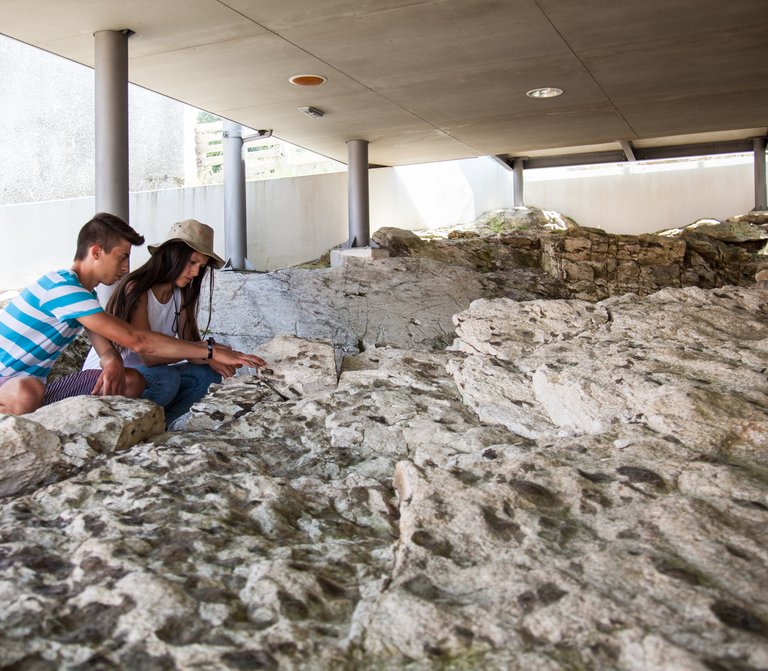




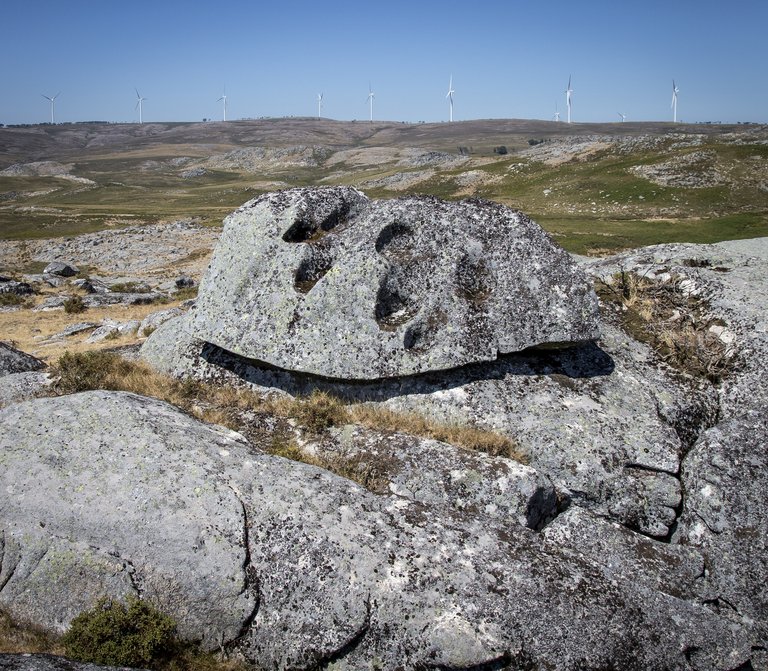


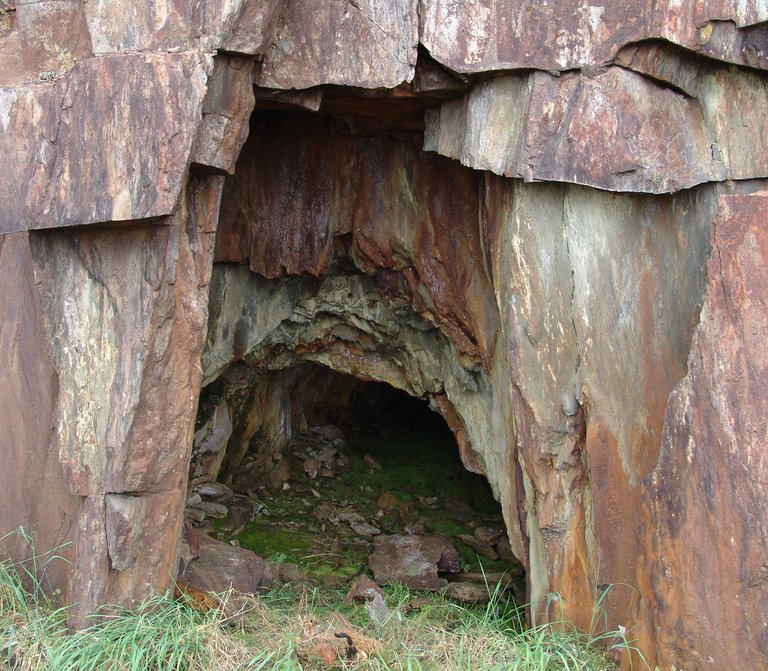




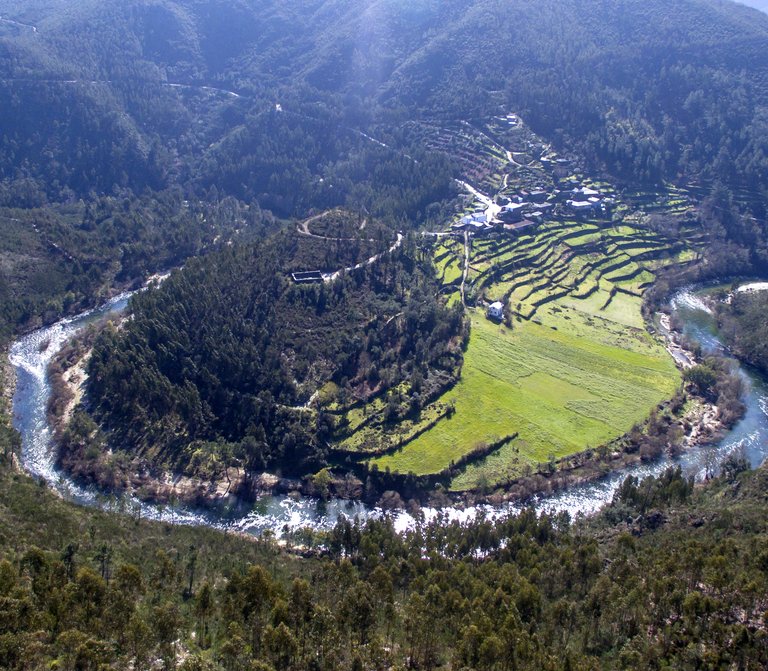

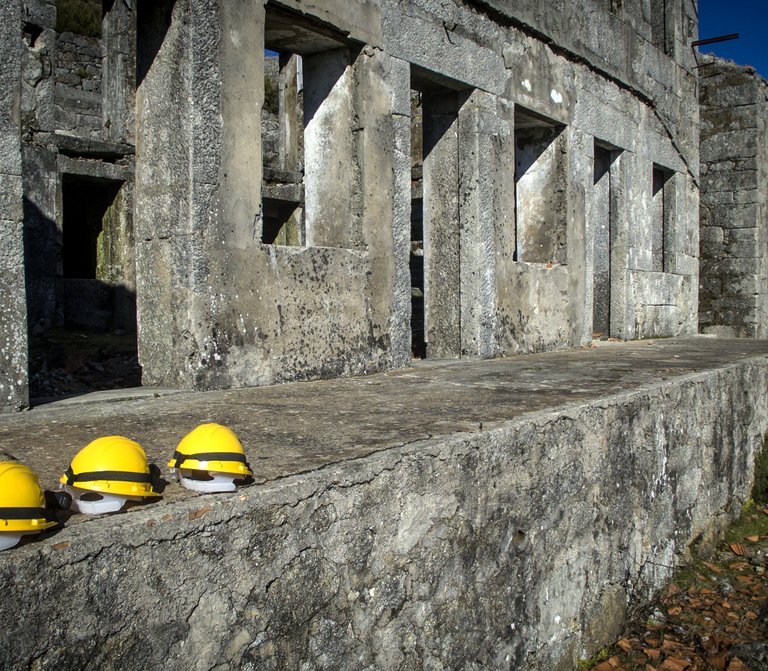


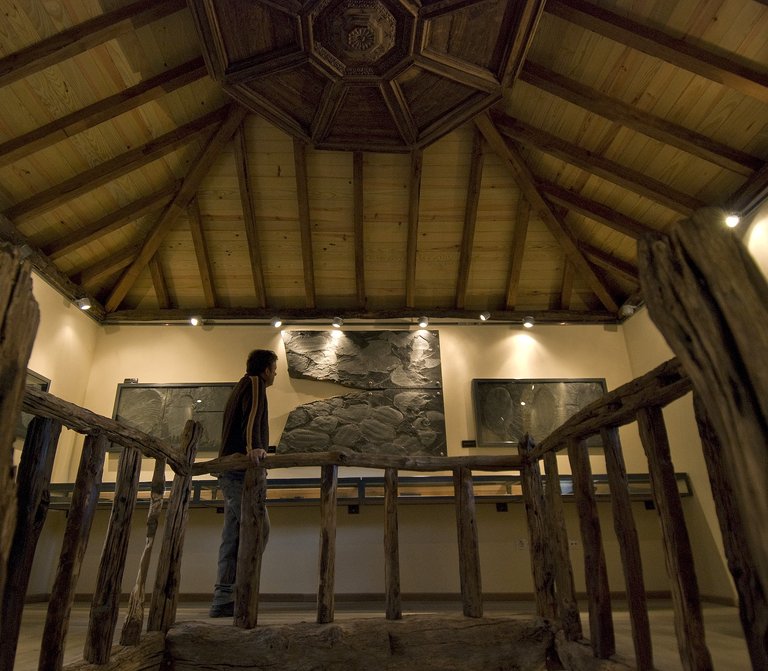
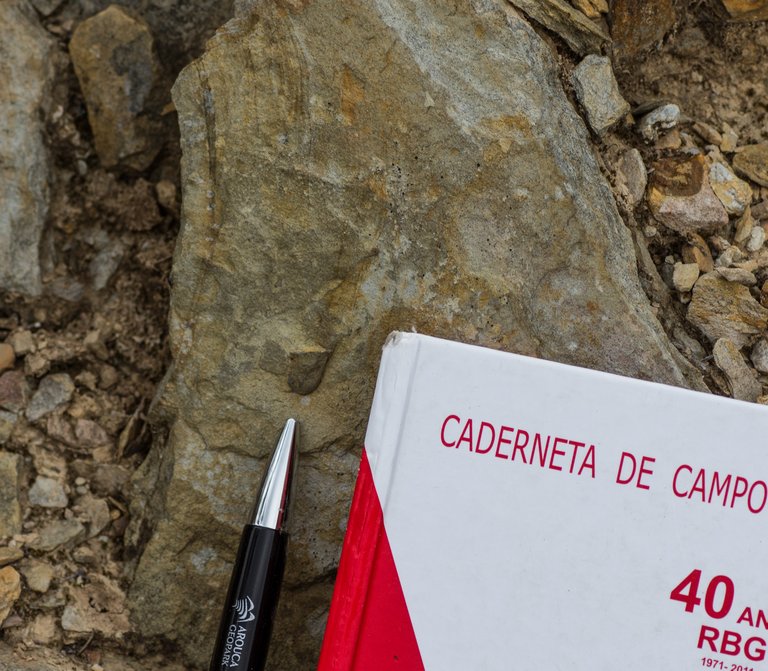


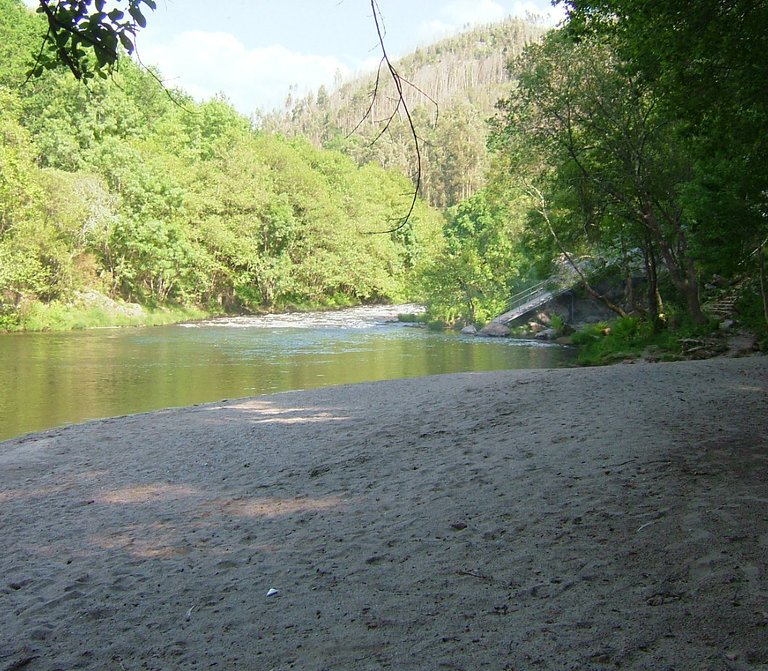
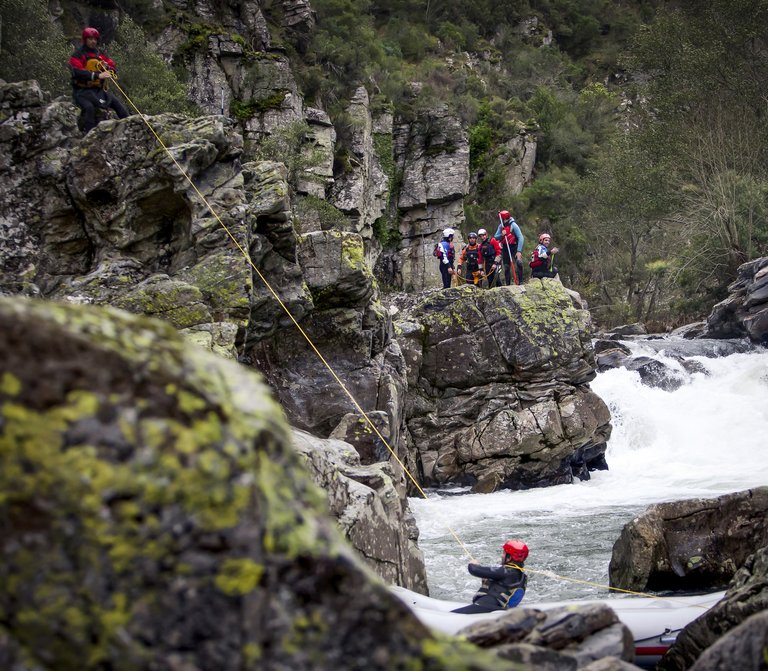



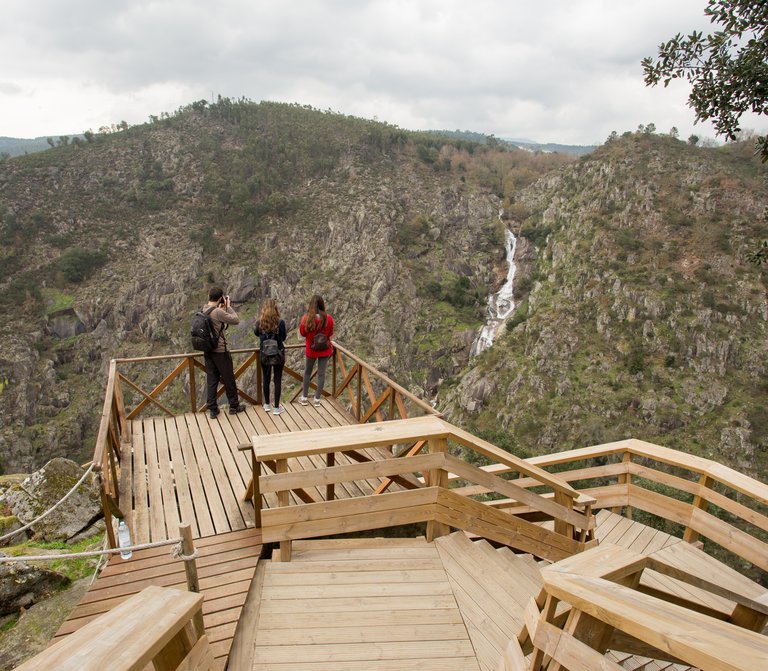
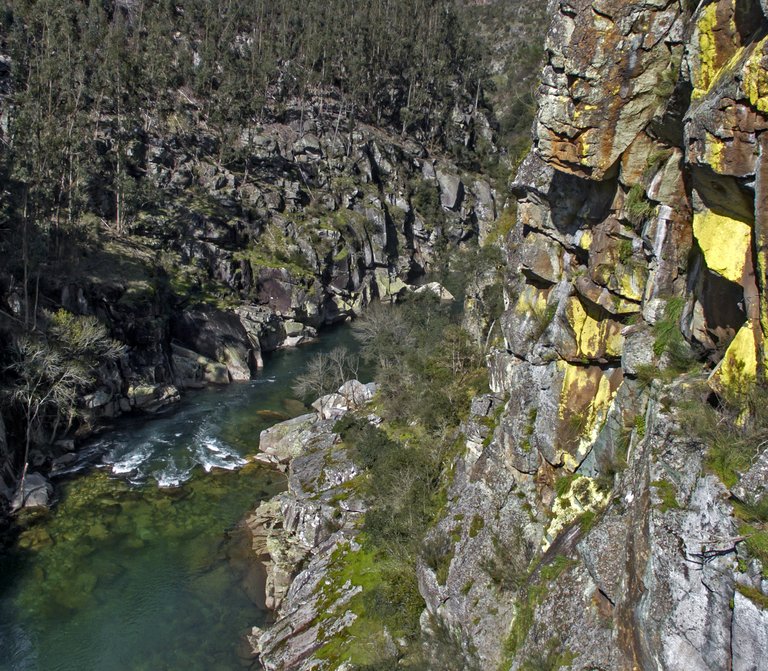


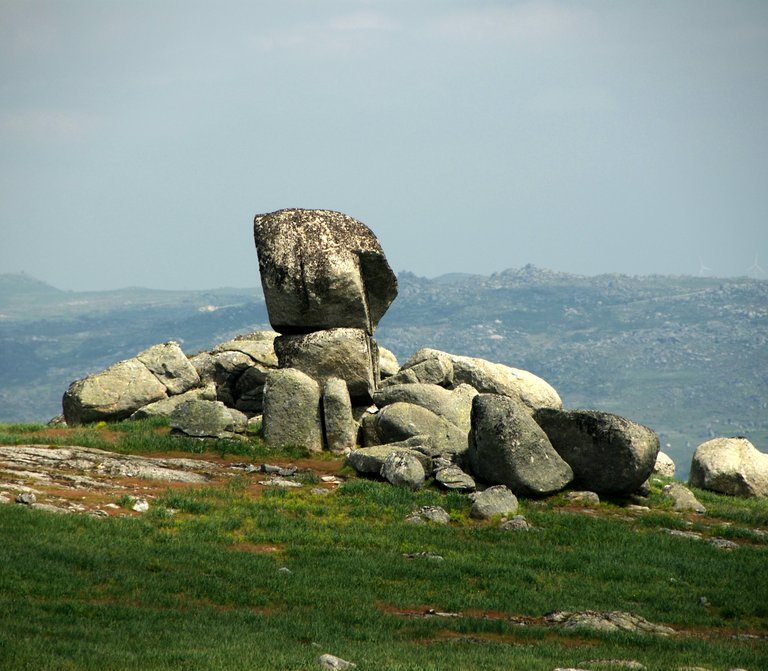


Colonial organisms that have inhabited the Paleozoic seas
During the Silurian period (443 to 416 million years old), there was an increasing deepening of the sea level in the Gondwana paleocontinent that helped the deposit of fine sediments in low oxygen conditions, originating black schists, where there are some colonial planktonic fossils preserved called graptolites. The geosite is translated by an outcrop of very fissile carbonaceous schist, where it is possible to find and observe a graptolites fauna of the Telychiano (Llandovery – inferior Silurian), composed by Monograptus marri, Parapetalolithus hispanicus, Spirograptus cf. guerichi, Rastrites cf. schaueri, Torquigraptus planus, Torquigraptus cf. proteus, Pritiograptus bjerrings and Metaclimacograptus sp.
The paleontology record of graptolites in this place underlines its high relevance, as it allows to determine the age of the strata where they are found. The high preservation level of these fossils was due to the deposit of very fine sediments in very low oxygen conditions (sedimentological interest), in the banks of the Gondwana paleocontinent (paleogeographic interest). This “open page” of the Paleozoic album has a high educational value for the reasons mentioned above, and it allows to explore several scientific data.









